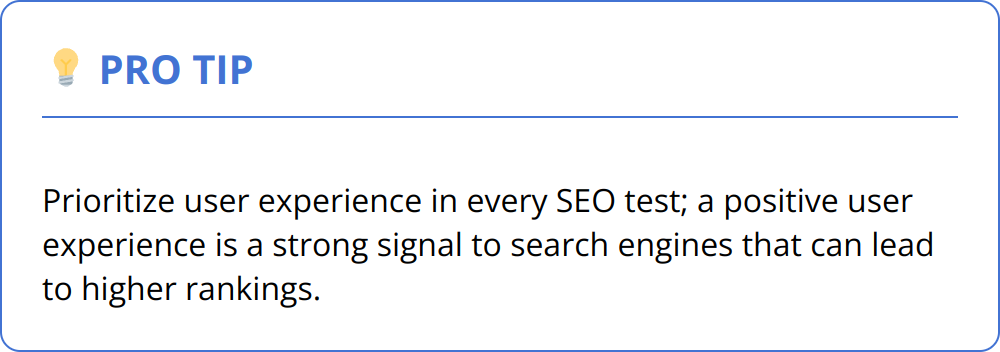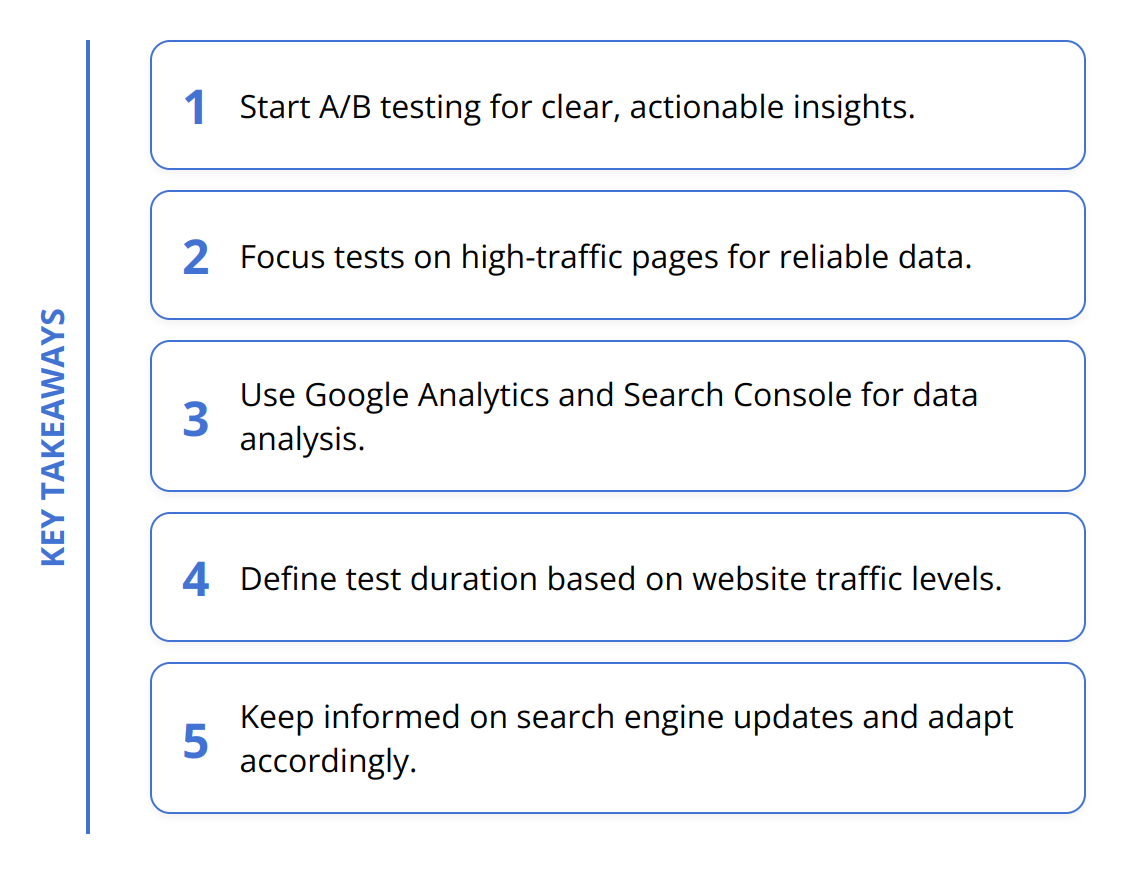SEO testing is a powerful strategy for any digital marketer looking to optimize their online presence. We at Emplibot believe understanding and implementing effective SEO tests can significantly impact your website’s performance. Through careful planning and analysis, it’s possible to enhance your site’s visibility and user experience. Let’s explore how to navigate the complexities of SEO testing efficiently.
Contents
ToggleUnderstanding SEO Testing
SEO testing stands out as the cornerstone for enhancing a website’s search engine visibility and user experience. It equips digital marketers with the insights needed to make data-backed improvements. The essence of SEO testing lies in its capability to empirically determine the effectiveness of changes made to a website’s content, structure, and on-page optimization strategies. Here, we delve into why it’s pivotal for digital marketing success and the various types that marketers can leverage.

The Essence of SEO Testing
At its core, SEO testing involves making targeted changes to web pages and measuring their impact on search engine rankings and organic traffic. This process allows for a systematic analysis to identify what adjustments contribute positively to a site’s SEO performance. Unlike assumptions or industry best practices, SEO testing provides empirical evidence about what actually works for your specific website in your specific niche.
Why It’s Essential for Digital Marketing
In the digital marketing realm, visibility is everything. Higher rankings in search engine results pages (SERPs) translate to more organic traffic, which can lead to increased conversions and revenue. SEO testing is indispensable because it:
-
Identifies successful optimization strategies tailored to your website.
-
Prevents potentially detrimental changes from being permanently implemented.
-
Enables continuous improvement in line with evolving search engine algorithms.
Given the complex and ever-changing landscape of SEO, relying on testing and not just intuition or outdated practices ensures that your strategies are effective and current.
Diverse Approaches to SEO Testing
SEO testing isn’t a one-size-fits-all process. There are a few different methodologies that marketers can employ, each suitable for various scenarios:
-
A/B Testing: This involves comparing two versions of a page to see which performs better in SERPs. It’s ideal for testing specific elements like meta titles, descriptions, or different content layouts.
-
Multivariate Testing: Similar to A/B testing, but assesses the impact of multiple variables changed simultaneously. It’s more complex but can provide insights into how different elements interact with each other.
-
Before-and-After Testing: By analyzing a page’s performance before and after changes, this method offers a straightforward approach to assessing the impact of larger updates, such as site redesigns or significant content overhauls.

The key to successful SEO testing is choosing the right type of test for your objectives and ensuring that you have sufficient traffic to achieve statistical significance.
Actionable Tips
For those looking to embark on SEO testing, consider these actionable strategies:
-
Start with A/B testing for straightforward, impactful insights.
-
Focus tests on pages with significant organic traffic to ensure reliable data.
-
Use tools like Google Analytics and Google Search Console for tracking and analyzing your test results.
SEO testing is not just a strategy but a necessity for anyone serious about optimizing their online presence. By adopting a meticulous approach to testing, marketers can make confident decisions that propel their websites to the top of the search results, ultimately securing a competitive edge in the digital landscape.
Conducting an SEO Test
Successfully conducting an SEO test requires a focused approach, selecting the right tools, and making decisions based on data analysis. The ultimate goal is to enhance your website’s search engine rankings and user experience. Here’s how to embark on an SEO testing journey that delivers tangible results.
Identifying Objectives and Tracking Performance
Firstly, setting clear objectives is vital. You might be looking to increase page views, enhance click-through rates, or improve your website’s ranking for specific keywords. Once your goals are in place, identifying Key Performance Indicators (KPIs) is the next step. These could include organic traffic, page ranking positions, or conversion rates. Concrete objectives and KPIs enable targeted testing and meaningful analysis of results.
Choosing Tools for SEO Testing
The choice of tools can make or break your SEO testing efforts. Google Search Console and Google Analytics are foundational for tracking your site’s performance. For A/B testing, tools like Optimizely can be invaluable for setting up and running tests efficiently. For sites focusing on content, utilizing an SEO-focused tool like SEMrush can provide insights into keyword performance and competitive analysis. Select tools that align with your testing objectives for streamlined execution.
Analyzing Results to Drive Decisions
After running your test, it’s time to analyze the data. Look beyond surface-level metrics and dig into user behavior, conversion pathways, and SERP changes. Decision-making should lean heavily on data. If test results show a positive impact on your KPIs, consider implementing the changes across similar pages on your site. On the other hand, if results are mixed or negative, it might be time to go back to the drawing board. Remember, the learnings from every test, successful or not, are invaluable for refining future SEO strategies.

Quick Tips for Effective SEO Testing:
-
Clearly define your test duration based on your website’s traffic levels. A minimum of two weeks is generally recommended, but larger sites may require longer to gather sufficient data.
-
Focus on one change at a time to clearly understand its impact.
-
Ensure your tests have statistical significance; tools like Google’s Optimize can help determine this.
-
Regularly update your testing strategy to reflect algorithm changes and market trends.
By adhering to these principles, you can harness the power of SEO testing to not only uplift your website’s performance but also gain insights that fuel growth. The dynamic nature of SEO demands a continuous testing mindset to stay ahead of the competition and meet the ever-evolving expectations of users and search engines alike.
Avoiding SEO Testing Pitfalls
When embarking on an SEO testing journey, it’s easy to fall into certain traps that can detract from your efforts and lead to misleading results. By recognizing and sidestepping these common mistakes, you ensure your SEO testing process is both efficient and effective, driving better results for your website.
The Perils of Ignoring Search Updates
One of the biggest mistakes in SEO testing is overlooking the ever-changing landscape of search engine algorithms. Updates can profoundly impact your test outcomes, rendering your conclusions obsolete if they’re not considered. Stay informed about the latest updates and trends to ensure your testing strategy remains relevant. This means regularly checking official sources and reputable SEO news platforms. Adapting your strategy in response to these changes is not optional; it’s mandatory for sustainability and competitive advantage.
The Importance of Measurable Objectives
Another critical oversight is failing to set specific, measurable goals for your SEO tests. Without clear objectives, assessing effectiveness becomes guesswork. Before starting any test, define what success looks like. Are you aiming for a higher click-through rate, improved rankings for specific keywords, or increased organic traffic? Establishing clear KPIs is vital for evaluating the impact of your changes and making data-driven decisions.
Not Considering User Experience
Lastly, never underestimate the user experience (UX) and page performance. These factors not only influence your site’s SEO but also its overall effectiveness in engaging users. Google’s page experience update makes it clear; the user’s experience is paramount. Ensuring fast load times, mobile optimization, and intuitive navigation should be integral to your testing strategy. Remember, what’s good for the user is often good for SEO.

Practical Tips for Avoiding Common SEO Testing Mistakes:
-
Keep abreast with search engine updates by subscribing to Google Webmaster Central Blog
-
Define your objectives clearly; quantitative goals are better than qualitative ones.
-
Regularly use tools like PageSpeed Insights to check and improve your site’s performance.
By paying attention to these areas, you’ll enhance not just your SEO testing strategy but your website’s overall success. Moving forward, the key is to incorporate these insights into your regular SEO routine, ensuring that your approach to optimization is both informed and dynamic.
Wrapping Up
SEO testing is not a one-off endeavor but a journey. It’s about continuously adapting and improving to meet the evolving standards of search engines and the expectations of users. We at Emplibot understand that the digital landscape is constantly changing, and so should your SEO strategies. The importance of ongoing SEO testing cannot be overstated. It offers a unique opportunity to refine your strategy, ensuring your website not only climbs but also maintains its position in search rankings.

Learning from each test, whether successful or not, is key to advancing your SEO practices. With each test, you gain valuable insights into what works best for your specific audience and niche. These lessons guide future optimizations, helping avoid wasted efforts on strategies that don’t yield results. Moreover, they foster a culture of data-driven decision-making, which is essential in the dynamic world of SEO.
We encourage marketers to adopt a proactive approach to SEO testing. Waiting for a decline in traffic or rankings to start testing is too late. By then, the damage is often done, and recovery can be slow and challenging. Instead, regular testing can help identify potential issues before they impact your performance, allowing for timely adjustments.
For businesses looking to streamline their SEO and content creation efforts, Emplibot offers a powerful solution. Emplibot can populate your WordPress site with SEO-friendly articles, complete with keyword research, images, and internal linking, all done automatically. This automation frees up valuable time, enabling you to focus on strategic tasks like SEO testing and analysis.
In conclusion, the significance of SEO testing in today’s digital marketing landscape is undeniable. It provides a competitive edge by enabling websites to respond swiftly to changing algorithms and user preferences. By learning from each test and adopting a forward-thinking mindset, businesses can thrive online. Remember, the goal is not just to reach the top but to stay there.










 Rated Excellent 4.5
Rated Excellent 4.5